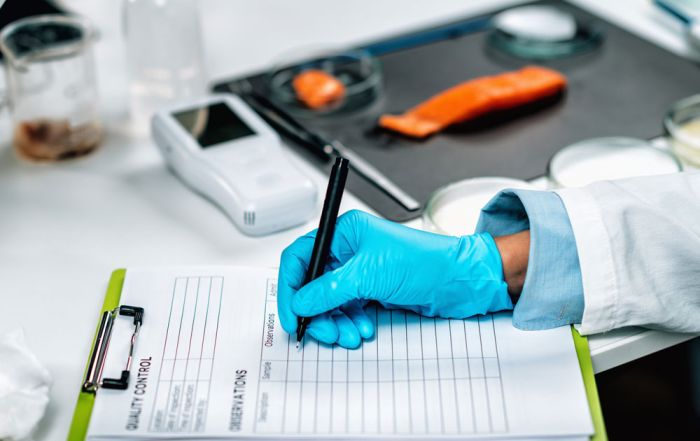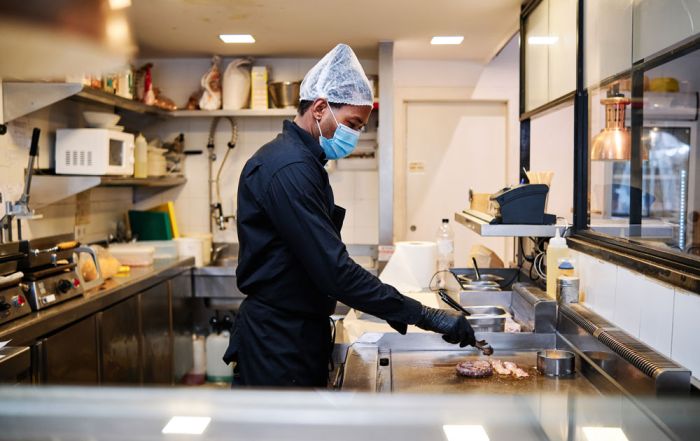Resources for Effective Purchasing and Receiving in Foodservice Operations
In our first blog for August, we reviewed best practices for purchasing and receiving, and why these can mitigate risks to safety of food from unintentional or intentional threats. In this posting, we offer some resources from trustworthy sources that can help foodservice managers in developing their own guidance for staff to follow when purchasing or receiving from vendors. Written guidance in the form of a standard operating procedure (SOP) makes clear to everyone in the relationship (vendor and foodservice staff) what and how tasks should be accomplished.
Written SOP templates to guide purchasing and receiving can be found at several extension websites or through health agencies. We’ve worked to develop those at Iowa State University, which are tailored for restaurants, schools, assisted living, or childcare foodservices. SOP templates are also available from the Institute of Child Nutrition.
With COVID being a concern, the trend of purchasing from local sources is gaining in popularity. A checklist of questions local fruit and vegetable growers can complete will ensure the foodservice has documentation that safe practices are followed by the farmer. The National Restaurant Association and Food and Drug Administration, and of course FoodHandlers, provide guidance regarding delivery of supplies by vendors, in addition to other reopening recommendations, following COVID-related shutdowns.
As an example, here are the SOPs from Iowa State University for Restaurant Purchasing and Receiving. Notice that the SOPs provide a rationale, assign specific tasks with detailed instructions, include measurable or observable standards to either employees or managers, and describe monitoring functions.
We would add that monitoring is NOT the responsibility of ONLY the manager. In a safe food culture, all employees should be comfortable providing nudges to others or calling attention to management to correct unsafe practices. Only by having everyone attuned to correct food handling and cleaning practices can a foodservice consistently provide safe food and avoid risk. Risk Nothing!
READ MORE POSTS
Hot off the Press: The 2022 Model Food Code has been Released! Part One.
It has finally arrived! Yes, the new year has arrived – but I was not referring to it. I was referring to the new 2022 Model Food Code (10th edition) that has been released by the Food and Drug Administration. I thought I might take this blog and the next blog to discuss some of the changes that have been made to the Food Code that you might see coming your way in the next few years.
Is a Food Safety Culture on your New Year’s Resolutions List?
We hope you all had a wonderful Holiday season and are getting ready for a great new year!
Don’t Underestimate the Importance of Employee Health as we head into the Winter Months
Early this month, I ran across an article discussing an outbreak investigation in the Australian Capital Territory. The outbreak caused more than 200 people to fall ill and was one of the most widespread outbreak investigations in the history of the territory. The cause was traced back to Norovirus, a virus I am sure you have heard us opine about in this blog before.
Exclusion and Restrictions: Understanding Employee Health and the Food Code
I received a call earlier in the month from a foodservice operator who suspected that one of their employees may have fallen ill and wondered if they had to send the employee home for the day. Once I started to ask a few more questions, it became obvious that the operator wasn’t really in-tune with the food code requirements on restrictions or exclusions for employees who may not be feeling well. Given that most operations are dealing with staff shortages currently and the fact that we are about to head into the fall and winter – when we tend to see an increase in upper respiratory and other illnesses, such as the flu - it seemed like a very timely and important topic for the blog this month.










